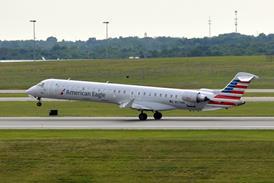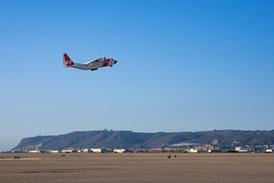Graham Warwick/WASHINGTON DC
US airframe and engine manufacturers, and several universities, have received contracts to investigate a range of technologies to reduce sonic boom under the US Defense Advanced Research Projects Agency's (DARPA) Quiet Supersonic Platform (QSP) programme.
The goal of the two-year, $35 million QSP programme is to reduce sonic boom sufficiently to make unrestricted supersonic flight possible over land. Studies are focused around a 45,500kg (100,000lb)-class strike/reconnaissance aircraft or supersonic business jet with a Mach 2.4 cruise and 11,000km (6,000nm) range.
Contracts have been awarded under three categories: technology development, propulsion systems and systems integration. Seven Phase 1 technology awards, ranging from $300,000 to $1 million, cover techniques including:
• aircraft shaping to prevent shock waves coalescing into a sonic boom (University of Colorado);
• off-body energy addition using plasmas, combined with aircraft shaping (Princeton University);
• distributed roughness to maintain natural laminar flow on a swept wing (Arizona State University);
• heat addition using a deployable ramjet, or "thermal keel", to shape the streamlines and increase virtual body length to reduce ground shock rise (Weidlinger Associates);
• top-mounted inlets to minimise inlet/nacelle contributions to ground signature (Gulfstream);
• supersonic natural laminar flow with a thin unswept wing (Directed Technologies/Reno Aeronautical);
• development of a boom propagation tool for multidisciplinary design optimisation (Stanford University).
General Electric and Pratt & Whitney will study applications of advanced concepts for supersonic cruise under two of six Phase 1 propulsion system contracts worth $300,000-$850,000 each. Other awards cover proof-of-concept demonstrations of a two-stage counter-rotating aspirated compressor (MIT) and vapourisation-cooled turbine blades (Aerodyne). Honeywell will assess engine designs incorporating ceramic components and compressor flow control, while Techsburg will apply flow control in an "intelligent" compression system.
Results from the technology and propulsion studies will be used by three systems integration contractors to develop aircraft optimised for low sonic boom. Three cost-sharing Phase 1 contracts, worth $2.5-3.5 million each, have gone to Boeing, Lockheed Martin and Northrop Grumman.
Source: Flight International























